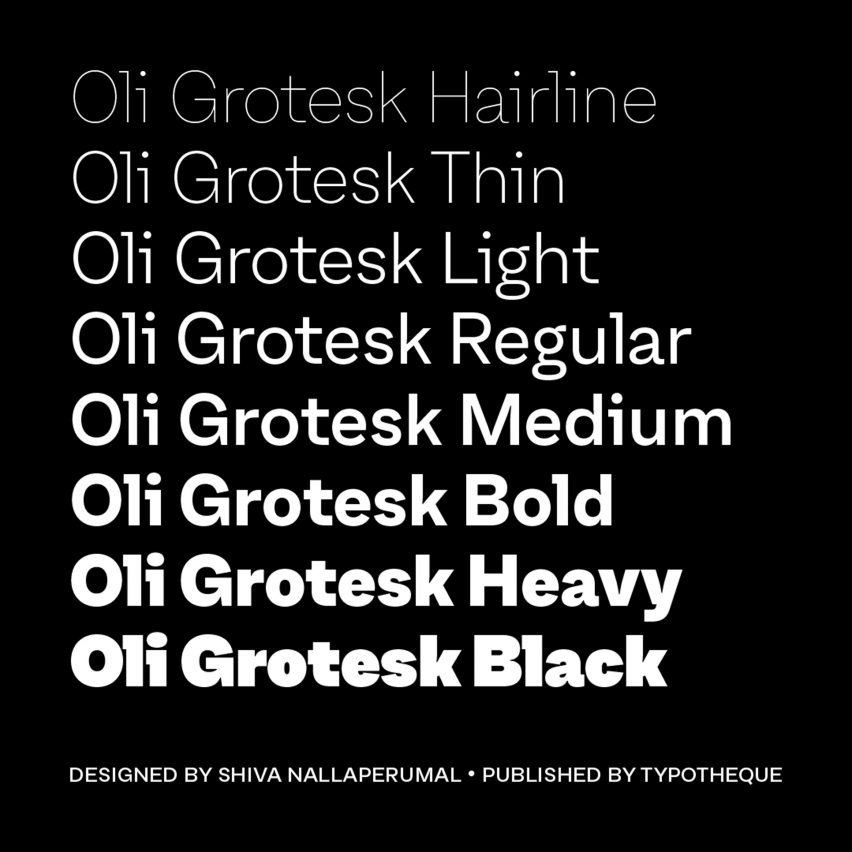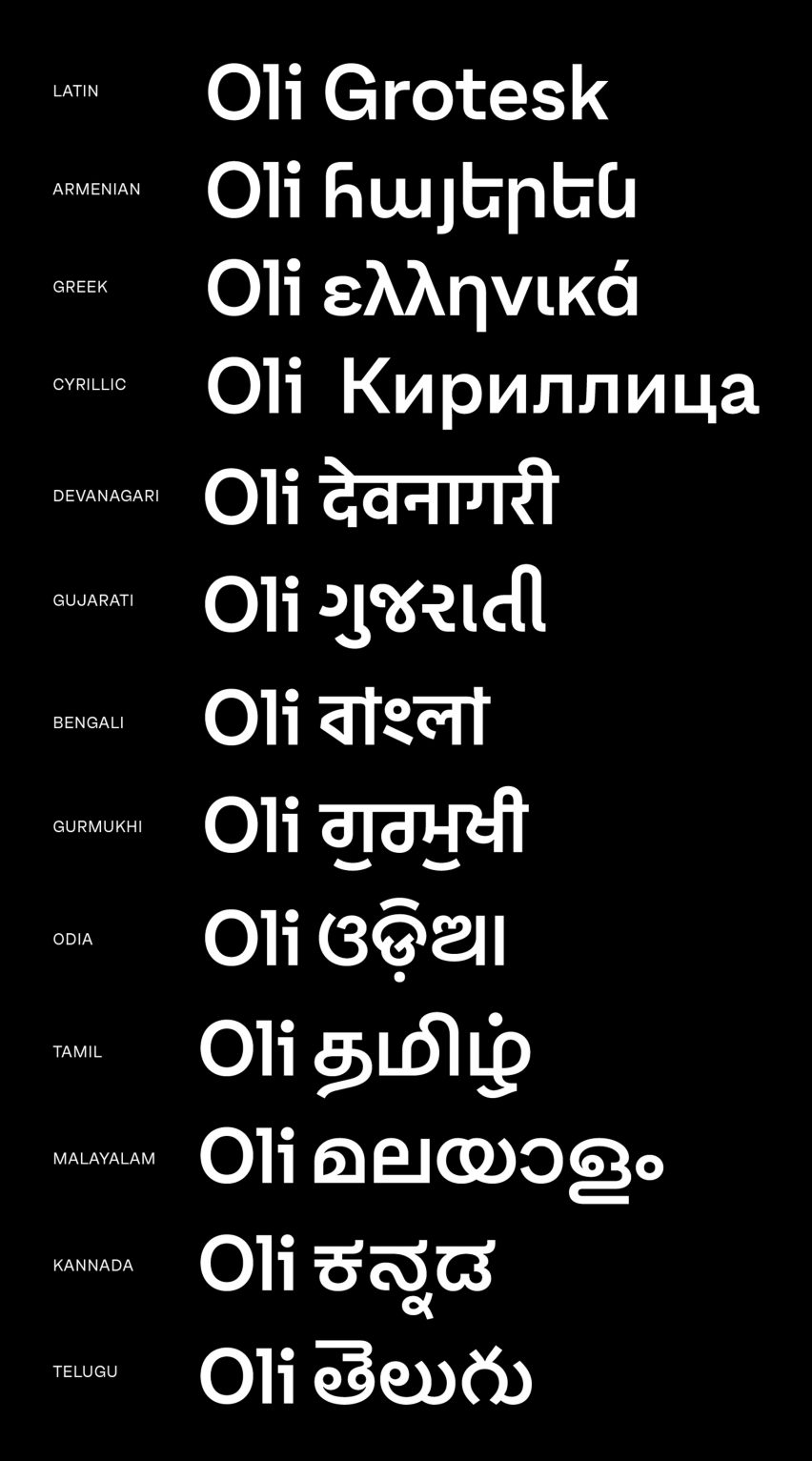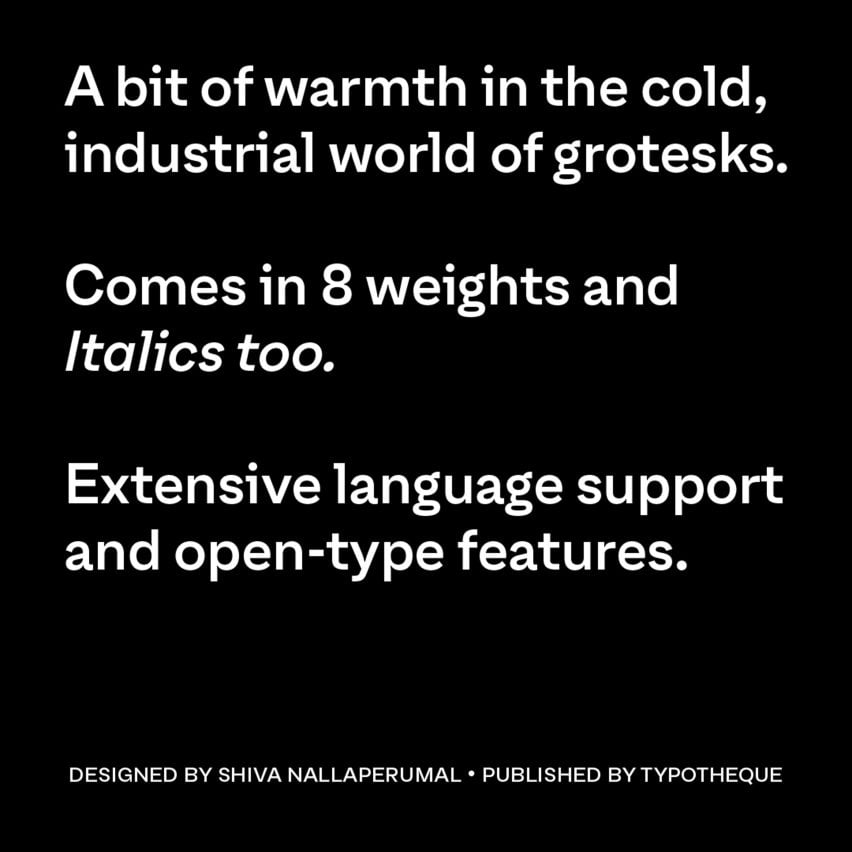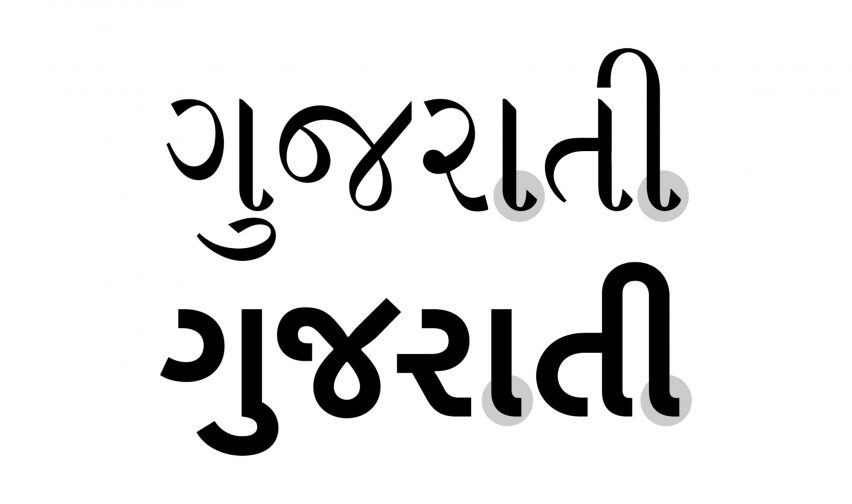Oli Grotesk is a modern typeface that can be used to write traditional Indian scripts
Indian graphic designer Shiva Nallaperumal has developed a versatile neo-grotesque typeface family that includes nine Indic scripts alongside Greek, Cyrillic, Armenian and Latin versions.
Oli Grotesk is intended as a warm, detailed and characterful alternative to the typically neutral neo-grotesque typefaces, which include familiar sans-serif fonts such as Arial, Helvetica and Univers.
Nallaperumal spoke about the typeface at Hyderabad Design Week, which took place earlier this month.

Nallaperumal, who is the co-founder of Bombay-based graphic design and typography studio November, was influenced by the industrial aesthetics of mechanical writing tools when developing the typeface.
Unlike more conventional neo-grotesque font families, Nallaperumal designed Oli Grotesk to be both expressive and distinctive, as well as functional and easy to read.
"Although the neo-grotesque genre tends toward cold, neutral typefaces, Oli's charming details glow with unreserved personality at large and small sizes alike, injecting a strong visual character into the text," said its creator.

From the outset, the typeface was designed as a system that could be translated into different scripts in addition to the Latin alphabet.
Nallaperumal teamed up with graphic designer Arya Purohit to develop the Indic versions of Oli, which will support all of India's writing scripts; Devanagari, Bangla, Gujarati, Gurmukhi, Urdu, Oriya, Tamil, Malayalam, Telugu and Kannada.
By offering the typeface in different scripts and the same range of weights as the Latin fonts, the designers wanted to ensure users in India have the same creative opportunities as those using more common font families.

According to Nallaperumal, the replacement of traditional metal type with digital word-processing technologies in the 1970s and 1980s had a negative impact on graphic design in India.
"Our scripts [in India] are so complicated that they did not fit well with the first generation of computers," said the designer in a video interview with Peter Bil'ak – co-founder of the Typotheque type foundry and design studio that publishes Oli Grotesk.

Nallaperumal added that the Oli system aims to provide an alternative to the plain, standard Indic type that comes bundled in with basic desktop publishing software.
"With Oli I was trying to find ways that we could design for the country without compromising on our languages," he said, suggesting also that people in India are gradually learning about the value of purchasing fonts and the increased design flexibility this provides.
The typeface is available in eight weights, each with an accompanying italic variation. The Devanagari version will be published soon, followed by other world and Indic scripts.
Back in 2016, international font company Monotype worked with Google to create one typeface that can be used by everyone in the world, writing in any language.
The font family, called Noto, covers more than 800 languages and 100 written scripts.